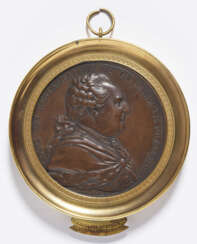nemours

Aurélie Nemours is a French abstractionist painter.
Aurélie Nemours created abstract geometric paintings, developing her own style based on pure colors and geometric shapes taken from the square, but without dogmatism or systematism. Her compositions are strictly arranged on a plane based on the intersection of horizontal and vertical. This painstaking work culminates in a meditative asceticism confined to squares and rectangles, black or gray, space and matter.


Aurélie Nemours is a French abstractionist painter.
Aurélie Nemours created abstract geometric paintings, developing her own style based on pure colors and geometric shapes taken from the square, but without dogmatism or systematism. Her compositions are strictly arranged on a plane based on the intersection of horizontal and vertical. This painstaking work culminates in a meditative asceticism confined to squares and rectangles, black or gray, space and matter.


Aurélie Nemours is a French abstractionist painter.
Aurélie Nemours created abstract geometric paintings, developing her own style based on pure colors and geometric shapes taken from the square, but without dogmatism or systematism. Her compositions are strictly arranged on a plane based on the intersection of horizontal and vertical. This painstaking work culminates in a meditative asceticism confined to squares and rectangles, black or gray, space and matter.


Aurélie Nemours is a French abstractionist painter.
Aurélie Nemours created abstract geometric paintings, developing her own style based on pure colors and geometric shapes taken from the square, but without dogmatism or systematism. Her compositions are strictly arranged on a plane based on the intersection of horizontal and vertical. This painstaking work culminates in a meditative asceticism confined to squares and rectangles, black or gray, space and matter.


René Jules Lalique was a French jeweller, medallist, and glass designer known for his creations of glass art, perfume bottles, vases, jewellery, chandeliers, clocks, and automobile hood ornaments.




Aurélie Nemours is a French abstractionist painter.
Aurélie Nemours created abstract geometric paintings, developing her own style based on pure colors and geometric shapes taken from the square, but without dogmatism or systematism. Her compositions are strictly arranged on a plane based on the intersection of horizontal and vertical. This painstaking work culminates in a meditative asceticism confined to squares and rectangles, black or gray, space and matter.
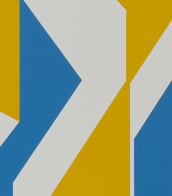

Aurélie Nemours is a French abstractionist painter.
Aurélie Nemours created abstract geometric paintings, developing her own style based on pure colors and geometric shapes taken from the square, but without dogmatism or systematism. Her compositions are strictly arranged on a plane based on the intersection of horizontal and vertical. This painstaking work culminates in a meditative asceticism confined to squares and rectangles, black or gray, space and matter.


Aurélie Nemours is a French abstractionist painter.
Aurélie Nemours created abstract geometric paintings, developing her own style based on pure colors and geometric shapes taken from the square, but without dogmatism or systematism. Her compositions are strictly arranged on a plane based on the intersection of horizontal and vertical. This painstaking work culminates in a meditative asceticism confined to squares and rectangles, black or gray, space and matter.


Aurélie Nemours is a French abstractionist painter.
Aurélie Nemours created abstract geometric paintings, developing her own style based on pure colors and geometric shapes taken from the square, but without dogmatism or systematism. Her compositions are strictly arranged on a plane based on the intersection of horizontal and vertical. This painstaking work culminates in a meditative asceticism confined to squares and rectangles, black or gray, space and matter.


Aurélie Nemours is a French abstractionist painter.
Aurélie Nemours created abstract geometric paintings, developing her own style based on pure colors and geometric shapes taken from the square, but without dogmatism or systematism. Her compositions are strictly arranged on a plane based on the intersection of horizontal and vertical. This painstaking work culminates in a meditative asceticism confined to squares and rectangles, black or gray, space and matter.
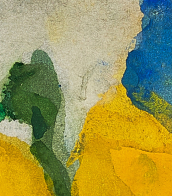

René Jules Lalique was a French jeweller, medallist, and glass designer known for his creations of glass art, perfume bottles, vases, jewellery, chandeliers, clocks, and automobile hood ornaments.


Henri Eugène Le Sidaner was a French painter known for his intimate, atmospheric landscapes and still-life paintings. He was born in Port Louis, Mauritius, but grew up in northern France and studied art at the École des Beaux-Arts in Paris.
Le Sidaner's early work was influenced by the Impressionists, but he later developed his own distinctive style characterized by a subdued palette, soft brushwork, and a focus on capturing the effects of light and atmosphere. His paintings often depict gardens, parks, and rural landscapes, as well as interiors and still-life arrangements.
Le Sidaner was also known for his use of light and shadow, which he used to create a sense of depth and mood in his paintings. He was particularly interested in the way that light and shadow interacted in interior spaces, and many of his paintings depict quiet, contemplative scenes bathed in a soft, diffuse light.
Le Sidaner's work was widely exhibited during his lifetime, and he received many awards and honors, including the Legion of Honor in France. His paintings are now included in many important collections, including the Musée d'Orsay in Paris and the Metropolitan Museum of Art in New York.


François-Xavier Lalanne was a French painter and sculptor. He studied sculpture, drawing and painting at the Académie Julian. Since the 1960s he has worked as a couple with his wife Claude Lalanne.


François-Xavier Lalanne was a French painter and sculptor. He studied sculpture, drawing and painting at the Académie Julian. Since the 1960s he has worked as a couple with his wife Claude Lalanne.




The Irish painter Roderic O'Conor was a pivotal figure in the post-impressionist movement during the late 19th and early 20th centuries. Aligning with the Pont-Aven School, his work thrived in France amidst the artistic revolution of the 1880s and 1890s.
O'Conor's artistic methodology was profoundly influenced by his time in France, spanning nearly five decades. His signature technique, characterized by thick, adjacent strokes of rich, contrasting colors, owes much to the discoveries of the Divisionists and Vincent Van Gogh.
His journey also included a transformative Parisian period beginning in 1886, marked by experimentation and innovation. Later, his Bretagne sojourn from 1891 to 1904 was interspersed with managing inherited estates back in Ireland, which allowed him financial independence from his painting sales. O'Conor's final years from 1934 until his passing in 1940 were spent in Nueil-sur-Layon.



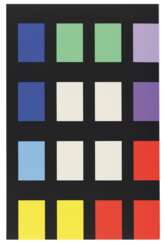

































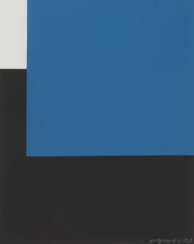

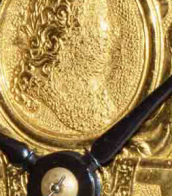



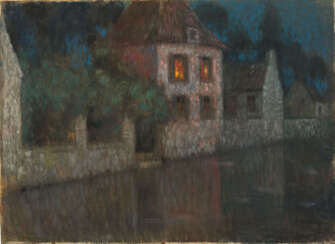

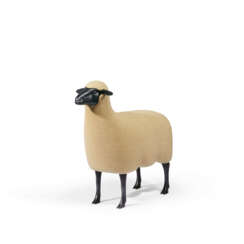






![TRELLON, Claude de (mort circa 1611). La Muse guerrière. Dédiée à Monsieur le Comte d’Aubijoux. Quatriesme édition, reveuë & corrigée par l’Auteur. [relié avec :] La Suyte de la Muse guerrière, qui est le p](/assets/image/picture_1321002/8a91b/3549536d1bec46a279dfe045d85421051616454000jpg__fix_374_244.jpeg)
![TRELLON, Claude de (mort circa 1611). La Muse guerrière. Dédiée à Monsieur le Comte d’Aubijoux. Quatriesme édition, reveuë & corrigée par l’Auteur. [relié avec :] La Suyte de la Muse guerrière, qui est le p](https://veryimportantlot.com/assets/image/picture_1321002/8a91b/3549536d1bec46a279dfe045d85421051616454000jpg__fix_374_244.jpeg)



